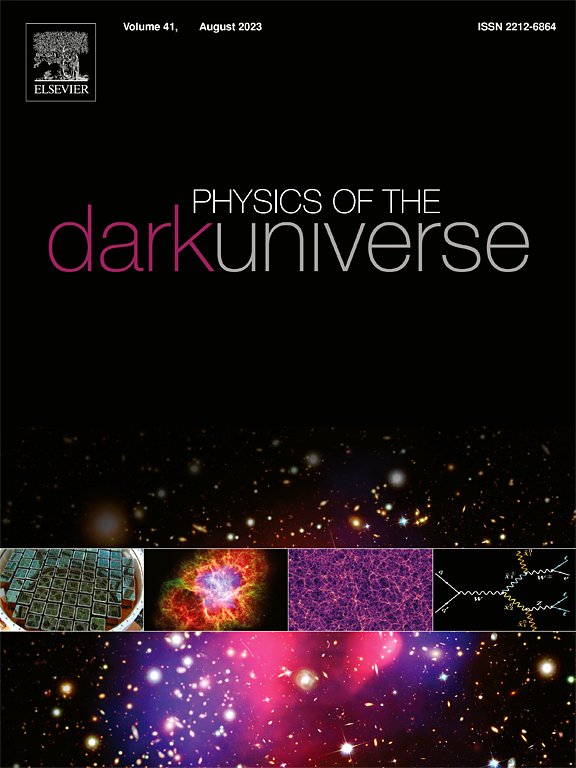Symbolic regression analysis of dynamical dark energy with DESI-DR2 and SN data
IF 6.4
2区 物理与天体物理
Q1 ASTRONOMY & ASTROPHYSICS
引用次数: 0
Abstract
Recent measurements of Baryon Acoustic Oscillations (BAO) from the Dark Energy Spectroscopic Survey (DESI DR2), combined with data from the cosmic microwave background (CMB) and Type Ia supernovae (SNe), challenge the -Cold Dark Matter (CDM) paradigm. They indicate a potential evolution in the dark energy equation of state (EoS), , as suggested by analyses that employ parametric models. In this paper, we use a model-independent approach known as high performance symbolic regression (PySR) to reconstruct directly from observational data, allowing us to bypass prior assumptions about the underlying cosmological model. Our findings confirm that the DESI DR2 data alone agree with the CDM model () at the redshift range considered. Additionally, when combining DESI data with existing compilations of SN distance measurements, such as Patheon+ and DESY5, we observe no deviation from the CDM model within (C.L.) for the interval of values of present-day matter density parameter and the sound horizon at the drag epoch currently constrained by observational data. Therefore, similarly to the DESI DR1 case, these results suggest that it is still premature to claim statistically significant evidence for a dynamical EoS or deviations from the CDM model based on the current DESI data in combination with supernova measurements.
基于DESI-DR2和SN数据的动态暗能量符号回归分析
最近来自暗能量光谱调查(DESI DR2)的重子声学振荡(BAO)测量,结合来自宇宙微波背景(CMB)和Ia型超新星(SNe)的数据,挑战了Λ-Cold暗物质(ΛCDM)范式。它们表明暗能量状态方程(EoS) w(z)的潜在演化,正如采用参数模型的分析所表明的那样。在本文中,我们使用了一种被称为高性能符号回归(PySR)的模型独立方法,直接从观测数据中重建w(z),使我们能够绕过关于潜在宇宙学模型的先前假设。我们的研究结果证实,在考虑的红移范围内,DESI DR2数据单独与ΛCDM模型(w(z)= - 1)一致。此外,当将DESI数据与现有的天体距离测量数据(如Patheon+和DESY5)相结合时,我们观察到现今物质密度参数Ωm的值与当前观测数据约束的拖行历元rd的声视界值的区间在3σ (C.L.)范围内与ΛCDM模型没有偏差。因此,与DESI DR1的情况类似,这些结果表明,基于当前DESI数据和超新星测量相结合,提出动力学EoS或偏离ΛCDM模型的统计显著证据还为时过早。
本文章由计算机程序翻译,如有差异,请以英文原文为准。
求助全文
约1分钟内获得全文
求助全文
来源期刊

Physics of the Dark Universe
ASTRONOMY & ASTROPHYSICS-
CiteScore
9.60
自引率
7.30%
发文量
118
审稿时长
61 days
期刊介绍:
Physics of the Dark Universe is an innovative online-only journal that offers rapid publication of peer-reviewed, original research articles considered of high scientific impact.
The journal is focused on the understanding of Dark Matter, Dark Energy, Early Universe, gravitational waves and neutrinos, covering all theoretical, experimental and phenomenological aspects.
 求助内容:
求助内容: 应助结果提醒方式:
应助结果提醒方式:


